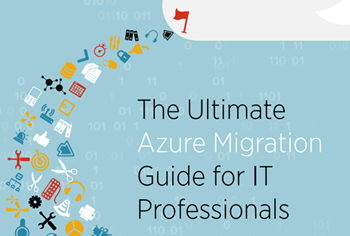According to Gartner, 83% of data migrations fail or exceed budgets and time schedules. Apart from this, the Impact of Cloud on ERP survey report stated that 90% of CIOs have experienced problems during the data migration process due to the complexity of moving data from legacy systems to the cloud. Due to the risks involved in the process, it’s advised to perform data migration iteratively. However, organizations can make their data migration project a hit through proper planning and following the best practices.
Here’s a checklist for you to make your database migration smooth and successful.
1. Access your current data environment
Before you start migrating your database, you must understand the data you’re working with. According to research published in the Journal of Information Security, about 90% of the initial specifications change, and over 25% of the specifications change more than once during the life of a data migration project. Hence, it’s a good practice to define the parameters for your data migration project to stay away from complexity and delays.
Find out what data you’re going to migrate, what can be left behind, how it will affect your system and business stability, how much storage you will require and what risks and challenges are involved during the process. These are the prerequisites for starting a database migration project. Skipping this pre-migration assessment could cost you big on money and time.
2. Analyze and review the data
It’s always advised to review the data before migration. There are many factors like data size, type of data, target systems, state of big data environments, cloud environment, legacy system complications, etc., which must be considered initially before a migration. And if necessary, you can reclassify your data based on your analysis. Once you have a better understanding of your data, you can decide the data migration strategy you can opt for. Big Bang and Trickle are the two strategies used widely to make data migration projects a success.
3. Cleanse the data
Inconsistent, corrupt or duplicate data can cause system failure, and I’m sure that's not what you want after you start migrating the database. So, when you plan to migrate your database, make sure that you’re transferring accurate and quality data. This can be ensured by a process called data cleansing.
Before starting data migration it’s an essential step to perform to ensure that you’re not moving old, corrupt or duplicate data. Data cleansing tools like WinPure, OpenRefine, Data Ladder, etc., are available in the market to help you clean and correct the database by identifying the irrelevant, duplicate, or corrupt data. These tools delete, replace or modify this dirty data to enhance the data quality.
4. Select the right migration tools
There could be chances that your team lacks the technical know-how of data migration and its best practices. In such a case, you can opt for data migration tools. Plenty of third-party tools are available in the market to help you with database migration. AWS Data Migration, Informix, and Azure DocumentDB are a few.
While it can be tedious to spend enough time evaluating the tool and ensuring that it fits your needs and works best for your use case, this is an integral part of the process. On top of this, make sure that you have the right technical resources handy to make the transition smooth and fast.
5. Backing up data or setting a rollback plan
Security is the primary concern for every organization or enterprise while transferring data from the source location to its target location. If data is lost during the migration process, this will have a significant impact on your business stability. To keep your database safe from such vulnerabilities or theft, you must set up data backup and replication before initiating the migration. Moreover, you can also set up a rollback plan to restore servers in order to maintain business continuity.
6. Execute and validate
Testing code during the development phase isn’t enough - you must check the data migration design to find errors before you start migrating the actual database. Through testing, you can prevent data from duplication and inconsistency. This testing is generally performed on actual data to check the completeness and accuracy of the application. Thus, you can solve problems and remove the errors in advance to make the migration process smooth. Ensure that data is being checked and validated throughout the migration to identify and correct the issues efficiently.
Final thoughts
Data migration is the trickiest process that needs extra care to keep your data safe and accurate. From planning to selecting the right tool and performing the quality check, these elements mentioned above can make your data migration project a success by efficiently moving data from its legacy system to a modernized environment.
Access the latest business knowledge in IT
Get Access

Comments
Join the conversation...